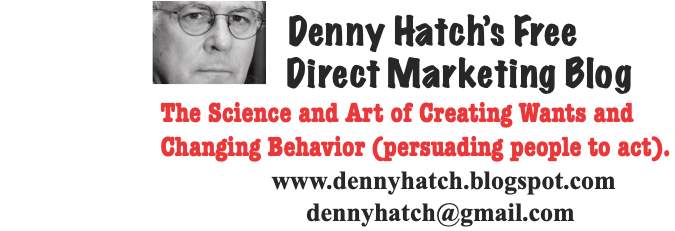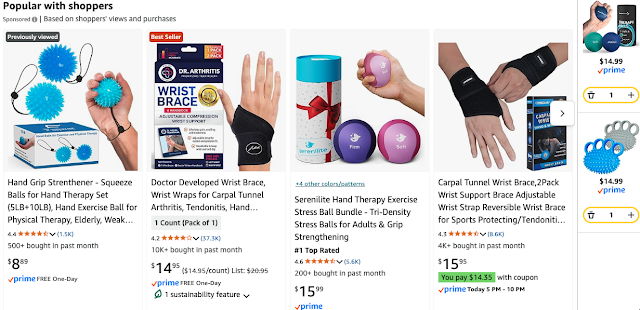#214 A.I. 15 August 2025
https://dennyhatch.blogspot.com/2025/08/a-i.html
Posted by Denny Hatch
A.I. Can Make You Rich When You
Master the Art of Stealing Smart.

Why Couldn't This $19.95 Collection Be the Basis
Of a Million-dollar Direct Marketing A.I. Database?
The 100 Greatest Advertisements was assembled by Julian Watkins in 1949 — and expanded to 113 ads for a second edition in 1959. All are ipso facto wildly successful advertisements. They were not chosen because the author “liked” them or thought they were fun and amusing. Each of these 113 full-page ads has a riveting headline, involving copy and — where applicable — has an order mechanism that brought responses and cash into the coffers of the advertisers that paid dearly to run them in myriad major newspapers and magazines. Many of them ran for years. Here's a prime example:
Click below for a giant enlargement of this ad.
Click Here for Vic
Schwab’s Masterful Copy and
Design That Sold a Million Books Over Three Years.
As Victor O. Schwab of Schwab &
Beatty wrote in the November 1939 issue of Printers'
Ink Monthly, "When an advertisement does a noteworthy job all of
us can learn something from it, no matter what it is selling.
Mr. Schwab had in
mind his ad that sold a million books: How to Win Friends and Influence
People. That is, it had sold a million books between December 1936 and
November 1939. The sales to date aren't terribly important here; any ad that
brings in cash for a million copies in three years via the coupon
route, is one whale of a great ad!
—Julian Lewis Watkins, The 100 Greatest Advertisements 1852-1958
Forget that Dale Carnegie’s book was published in 1936. The headline and copy are dynamite for the ages. The ad was seen by tens of millions of people in myriad up market newspapers and magazines. The price of the book was $2. (That’s a whopping $46.25 in today’s dollars!) Vic Schwab's ad convinced one million people to fill out the tiny coupon and pay $2.00. (That's $23.1 million in today's dollars.) Publishers Richard L. Simon and M. Lincoln Schuster sold a mind-bending 30 million copies worldwide (Simon & Schuster continues to sell 250,000 copies every year).
The Obvious Reason All These Great Advertisements
Are Proven Successful Is Because They Ran for Years.
Their copy platforms worked like gangbusters and made a yummy fortune for the advertisers.
Among the 113 products and services in
THE 100 GREATEST ADVERTISEMENTS 1852-1958
— David Ogilvy, OGILVY ON ADVERTISING.
—Julian Lewis Watkins.
In my opinion there is nothing artificial about it. The concept and execution is a very real, fascinating, staggeringly brilliant mankind-and-womankind's highest achievement in harnessing encyclopedic information. "A.I." is outrageous mislabeling.
Okay, So What's a Million Dollar Direct Marketing A.I. Database?
A massive invaluable anonymous universal swipe file and idea factory for entrepreneurs, corporate executives, directors, board members, advertisers, advertising agencies, direct marketers, creatives, copywriters, consultants, fiction writers, seasoned news reporters and cubs, students, inventors, teachers, editors, business majors, government employees, politicians, ad infinitum.
A.I. Marketing Databases Possible?
A Riveting Rave Review of Denny Hatch's Masterpiece.
By Oluchi Samuel
10 December 2024
An official OnlineBookClub.org review of Method Marketing by Denny Hatch.
5 out of 5 Stars
To
make a lot of profit, business owners need to understand and employ
marketing. As the name implies, Method Marketing by Denny Hatch is a
book that educates readers on method marketing. The author also shares
the stories of some people who employed method marketing.
Marketing
is the business of acquiring customers and continually thrilling them.
Method marketing, on the other hand, is the ability to get inside the
heads and under the skin of the people you are marketing your product
to. Direct mail is the largest advertising medium, and it is the medium a
lot of method marketers build their businesses on. The author shared
the stories of some marketers with huge businesses. These marketers were
Father Bruce Ritter, Martin Edelston, John Peterman, Bill Bonner, Bob
Shnayerson, Curt Strohacker, David Oreck, and William Kennedy. They
owned businesses like The Boardroom, J. Peterman Company, Agora
Publishing, The Eastwood Company, The Oreck Corporation, and Western
Monetary Consultants. He shared their stories, how they started their
businesses, and he also dropped points for marketers to pick up from
their experiences.
This is a wonderful book with lots of great
lessons in marketing. I loved that the author shared some successful
marketers' experiences. He used these stories to educate us. He
discussed how they started their businesses and some of the mistakes
they made along the way. These real-life stories made me understand his
lessons quite well. I appreciated them. Readers who are planning on
venturing into these businesses could learn a great deal from these
stories. The author also exposed me to some businesses I hadn't heard of
before, like The Teaching Company, Agora Publishing, Quest/77, and The
Oreck Company.
Copywriting is a business venture I have been
meaning to start. Luckily for me, I got the opportunity to read this
book. The author showed the significance of copywriting and also shared
tips on how to write a great copy. It gave me insights and taught me how
good a copy should be written. The story of the First Bank of Troy was
one of the stories I loved. The president of the bank, Frank O. Brock,
operated a customer-friendly business. He paid personal attention to all
his customers. He would go over lists of customers and call or give
personal notes to them at least once a month. As a novice in marketing, I
appreciated the appendix the author added at the end of the book. It
saved me a lot of trips to the dictionary.
For all these reasons, I rate this book 5 out of 5 stars.
It is an amazing book that all marketers should read. There was
absolutely nothing to dislike. I found one error, showing that it was
professionally edited. I recommend it to marketers and people planning
on venturing into marketing, as it contains a lot of tips to flourish in
marketing.
METHOD MARKETING
View: on Bookshelves | on Amazon
You can request a sample
And Read the First 31 Pages FREE.
###














